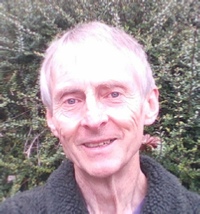
Finding Oneself
through meditation, enquiry, & chanting
Meditation etc and me
When I learnt TM in 1970, I felt then that that it would become part of my life, and not only for dealing with the stress of student life in London. It also opened up new experiences of self and a different perspective of the possibilities available to every human being. Since then, it has been a refuge of peace in difficult times, and a relaxing and enjoyable part of my day at other times.
A few years after I learnt to meditate I took part in a six-month residential TM teacher training course in France. We meditated and did yoga asanas much of every day, and studied the Indian philosophy that provided a framework for understanding the altered states of consciousness that we were having glimpses of.

That was followed by a period of full-time teaching in West London, and seeing the difference it made to people’s lives.
Then the opportunity presented itself to work at the international headquarters of the TM organisation in Seelisberg, Switzerland, where its founder Maharishi lived most of the time. My work was mainly scientific research, measuring sensory acuity and hormone levels on people who were doing long residential intensive meditation courses. The results were in some cases truly remarkable.
About 350 people from many countries lived at the ashram and it felt like being at the centre of the meditation world. After a couple of wonderful years the Swiss authorities changed their visa regulations and all the non-Swiss residents of Seelisberg had to leave, and I spent the next year working full-time with the English TM movement before deciding to train in writing computer software - an occupation that I still enjoy.
After a few decades of teaching TM part time, I decided to teach independently from the TM movement. Over the years I had become uncomfortable with the increasing course fees that put instruction beyond some people’s reach.
Maharishi had provided an education in the theory and practice of meditation, but because of the size of his organisation, he did not have time for individual students. He was concerned only with his world plan to make meditation available everywhere. For some time I had felt the need for a personal connection with a teacher, and during the last 20 or so years became a student of other teachers, first Dr Vijay Shankar and then Satyananda. They teach in a cognitive tradition known as advaita or non-duality, characterized by guided self-enquiry. There is no formal meditation practice: the teaching is dialogue based, about recognising how the mind works and how to identify misconceptions that lead to all kinds of trouble.
Through meditation, stilling the mind and body inevitably produces cognitive changes and a different understanding of self, while through the cognitive process of self-enquiry, exploring who we are inevitably produces a relaxation of mind and body. I have found that these different approaches perfectly complement and support each other. I teach TM according to the detailed method laid down by Maharishi, but also apply the principles of non-duality in the discussions.
Another approach offered by Indian tradition is the culturing of the emotions, known as bhakti or devotion. One of the more tangible aspects of this is devotional singing. Information about our local group is here.
Other meditative practices … listening to the body and expressing feeling in 5 Rhythms dance, and embracing not-knowing and being transparent in Sacred Clowning.
